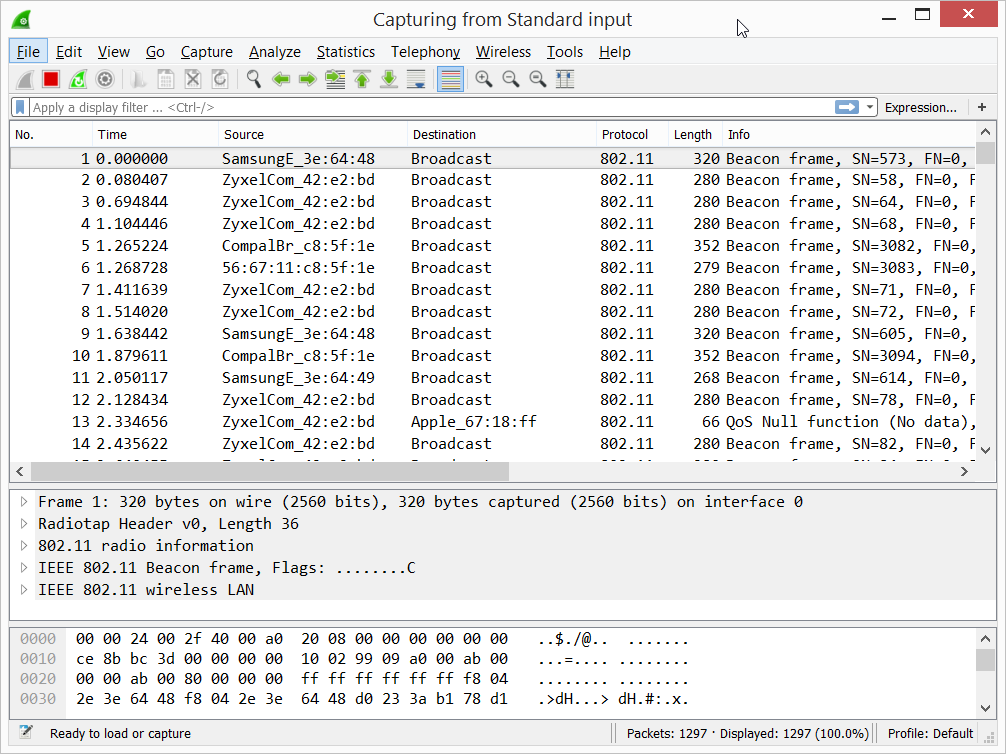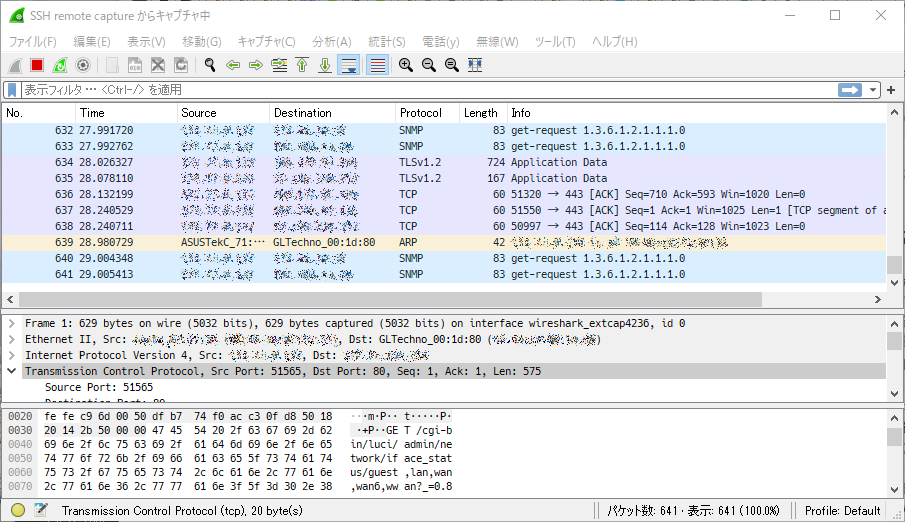

In other words, if you would like capture HTTP calls for Apache. TCPDUMP does the same job irrespective to what technology (or) server you are using it for. You can optionally monitor all the available interfaces by mentioning tcpdump -i any you must mention the interface name tcpdump -i enp0s8 In my case, My web server IP is 192.168.10.10 so I should pick and use the interface name of the same enp0s8 you can execut the command ifconfig (or) ip a To Get the interface name of your IP which you need to specify it in the tcpdump command. Use the right interface name (or) use any in the interface name. Make sure tcpdump is installed and configured properly ~]# tcpdump -version
#Tcpdump wireshark ssh how to#
Some basics about how to run tcpdump in your server in the right way.
#Tcpdump wireshark ssh password#

How to dig into the incoming (or) outgoing HTTP traffic and take a look at the concrete elements of HTTP protocol such as headers, cookies, request body as they gets transmitted.How to tamper and read the incoming and outgoing HTTP traffic to our applications deployed in weblogic.How to monitor/track HTTP and HTTPS calls with tcpdump in weblogic,websphere,tomcat application servers and web servers like Apache which runs on LINUX platform.We are going to discuss the following items, practically as much as possible. In this post we are going to see how middleware administrators (or) developers could use tcpdump to accomplish their troubleshooting drama. Refer my another article on How to decrypt HTTPS traffic to see headers and request/response content The Objective There is a solution to decrypt HTTPS traffic So it might make your troubleshooting little hard, since the packets are encrypted. With proper tools and little knowledge about protocols, anyone can easily make use of it and feel the magic lies within.īe informed that the industry standards have changed for good and the HTTPS is becoming a basic requirement for all webservices and websites. TCPDUMP is mostly misconceived as a network engineer’s subject and it displays some incomprehensible binary data that none of us could understand. How to read the TCPDUMP recorded session (or) packet capture – pcap file.How to record a TCPDUMP Session (or) Capture packets with tcpdump.Associated with a Single Client along with HTML data ( GET & POST ) on port 18001 How to capture a Complete HTTP Transmission, incoming and outgoing Including both HTTP Request and Response.How to capture the HTTP packets being transmitted between Webserver and Application server both GET & POST?.How to capture the Cookies from Server and from Client ( Request & Response).How to capture HTTP Passwords in POST Requests.How to monitor all the incoming HTTP Request URL’s (POST or GET).Associated with a Single Client along with HTML page data ( GET & POST ) on port 80 How to capture both HTTP GET (or) POST Incoming calls to port 80 (or) 443 ( Apache/NGINX) Originating from 192.168.10.1 Host.


You want to monitor the traffic inflow and outflow of Apache httpd server on any specific port like port 80 or 443.Web servers such as Apache, NGINX, Oracle HTTP, IHS web servers and application servers such as Weblogic, Websphere, Tomcat, JbossĬonsider yourself in any of the following scenarios This post is written for the people who work in middleware technologies. TCPDUMP is a swiss army knife for all the administrators and developers when it comes to troubleshooting.


 0 kommentar(er)
0 kommentar(er)
